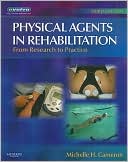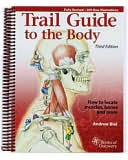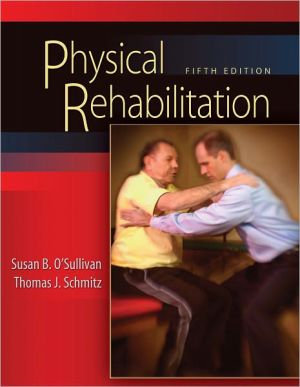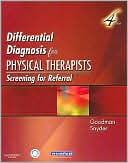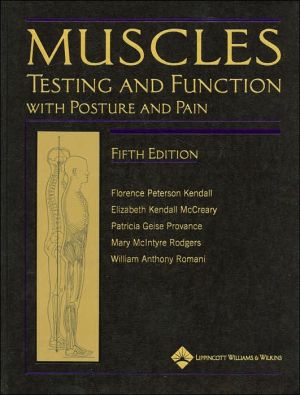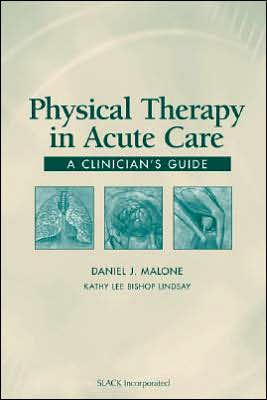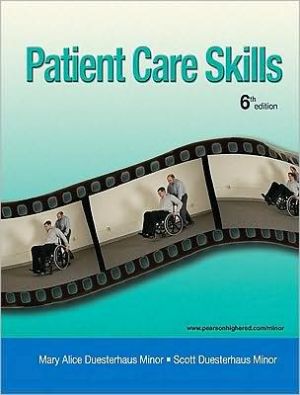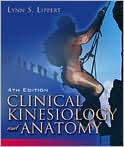Physical Agents in Rehabilitation: From Research to Practice
Search in google:
This straightforward and accessible guide teaches the how and why for effective and safe application of physical agents within a complete rehabilitation program. It covers everything from new applications to thermal agents, hydrotherapy, traction, compression, ultrasound, electrical currents, and electromagnetic radiation. Readers will learn when and when not to use physical agents, how to integrate these tools into a patient's overall treatment plan, and how to document treatment to optimize reimbursement and minimize liability. Clinical case studies are streamlined to provide accurate information quickly while enhancing decision-making skills. Evidenced-based practice is incorporated throughout, justifying treatment choices with concrete, up-to-the-minute research data.• Comprehensive coverage of all physical agents - thermal agents, hydrotherapy, traction, compression, ultrasound, electrical currents, and electromagnetic radiation - ensures that readers understand the benefits and questions involved in correct applications. • Clinical Case Studies help readers sharpen their decision making skills regarding important treatment choices and effective applications. • Up-to-date information on research-based practice draws on the latest research sources, particularly those from the last 5 years. • Incorporation of Preferred Practice Patterns from The Guide to the Physical Therapist Practice, 2nd Ed., throughout the text ensures that the reader is using the best and latest practices as defined by the APTA. • Contraindications and Precautions boxes explain the appropriate use and application of physical agents with up-to-date warnings for optimum care paths. • Step-by-step, illustrated Application Techniques boxes demonstrate how to reproduce effective treatments. • Tables, drawings, algorithms, and photographs help readers evaluate applications of physical agents as well as desired outcomes. • Summary of Information Covered and Objectives set the stage at the beginning of each chapter, guiding the reader and offering a structure for chapter review.• Completely reorganized format makes content more accessible, with chapters of greatest importance first, and related content grouped together. • Four new chapters have been added to this edition: Electrical Currents (Chapter 8); Traction (Chapter 10); Compression (Chapter 11); and Integrating Physical Agents into Patient Care (Chapter 13). • The new chapter on electrical stimulation (Chapter 8) presents a simplified approach to this complex topic, to present the full scope of the benefit of this treatment options. • New emphasis is placed on the newly revised International Disability standards (ICIDH model). • Revised Clinical Case Study feature emphasizes paths to optimal treatment and follow-up. • Over 50 new illustrations and photographs help the reader better understand the concepts presented. • Language from the APTA's Guide to Physical Therapy Practice, 2nd Edition, aligns the book's presentation with current practice and documentation patterns. Aaron M. McBride The book is an overview of pain, inflammation, and healing, and specific responses in regard to physical agents and implications in patient care. The purpose is to help students or licensed professionals further their understanding of the realm of physical agents and their physiologic rationale. An attempt is made to cover all aspects, thus making it the only necessary book for understanding and implementation of all physical agents in the healthcare rehabilitation setting. This book is written primarily for the student or licensed physical therapist. However, it is my opinion that athletic trainers and occupational therapists, whether student or professional, would benefit from this text. Initially, the physiological rationale behind pain, inflammation, cell mediated response, and tone are covered, including their effects on healing processes. All modalities and their respective responses are covered as well. The conclusion is a presentation of an integration of all principles of physical agents by case studies and patient implementation in the rehabilitation setting. Throughout the book, there are excellent diagrams and illustrations which assist greatly in explaining otherwise tedious physiologic processes and their responses to modalities. This is an excellent tool for its intended population. It is a thorough text that covers challenging topics, which are, nonetheless, the basics of all that is performed on a daily basis in the rehabilitation setting. Students as well as licensed professionals would benefit from this text in their personal library for reference or professional development.
1 Introduction to Physical Agents and How They Are Used 1Pt. 1 Pathology and Patient Problems 232 Inflammation and Tissue Repair Julie A. Pryde Pryde, Julie A. 253 Pain 494 Tone Abnormalities Diane D. Allen Allen, Diane D. Gail L. Widener Widener, Gail L. 775 Motion Restrictions Linda G. Monroe Monroe, Linda G. 110Pt. 2 The Physical Agents 1296 Thermal Agents: Cold and Heat 1317 Ultrasound 1778 Electrical Currents Sara Shapiro Shapiro, Sara 2079 Hydrotherapy 24510 Traction 28711 Compression 31712 Electromagnetic Radiation: Lasers and light 34613 Ultraviolet Radiation 37014 Diathermy 385App Electrical Stimulation, Ultrasound and Laser Light Handbook 405Index 441
